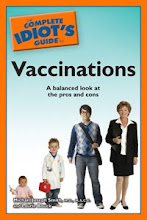The public health cost of ART preterm births was approximately $1 billion in 2005, or an average of $51,600 per infant, the report stated. One percent of all
In the report “Assisted Reproductive Technology Surveillance – United States, 2005,” the CDC analyzed data from 89% of the 475 medical centers that treat fertility problems with assisted reproductive technologies.
The report stated that many ART medical centers are working to avoid multiple births in favor of singleton births by implanting fewer embryos at a time, but others are bowing to patient and marketing pressures to increase their success rate by implanting numerous embryos at once.
Successful fertility treatments themselves increase the number of children who are as genetically vulnerable as their parents were to infertility problems as adults. Successful treatments therefore create a new generation of customers for infertility clinics, and, barring medical advances in ARTs, fresh public health costs in the future.
There are alternatives. For a couple unable to conceive, adoption can help them build a family – a choice that helps both individuals and society. Considering the public health cost of ARTs and the dismal failures of the U.S. foster care system, it is in the government’s best interest to take two steps: regulate the use of multiple embryos in ART, and promote and streamline the domestic adoption process.
Addendum - July 17, 2008
Preterm birth can also have long-term consequences on an infant. Today, the New England Journal of Medicine published an article about the "Long-Term Medical and Social Consequences of Preterm Birth" among preterm infants followed to adulthood in Norway. Among this group, there was a significantly increased risk for cerebral palsy, mental retardation, and dependence upon disability payments as adults if they were born at 23 to 27 weeks. The abstract concluded that "the risks of medical and social disabilities in adulthood increased with decreasing gestational age at birth."




No comments:
Post a Comment